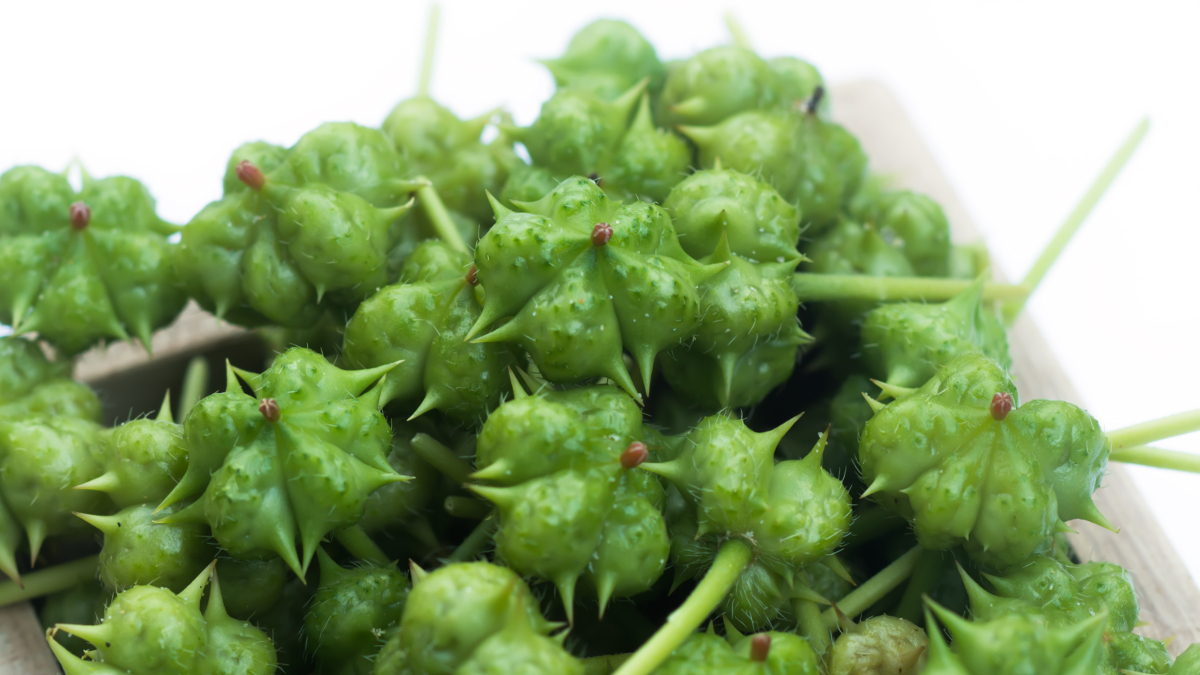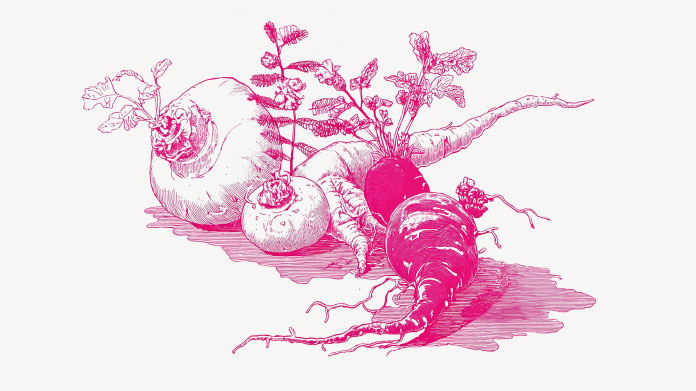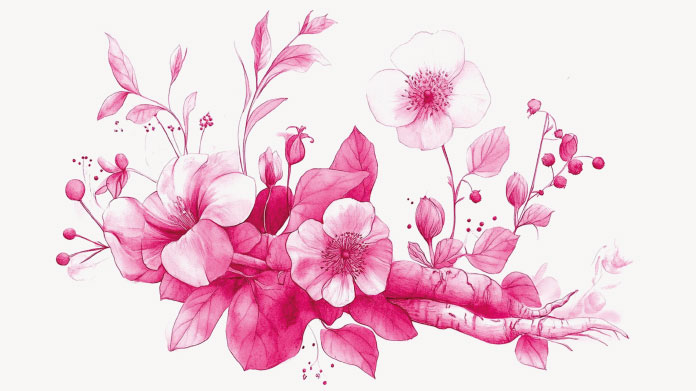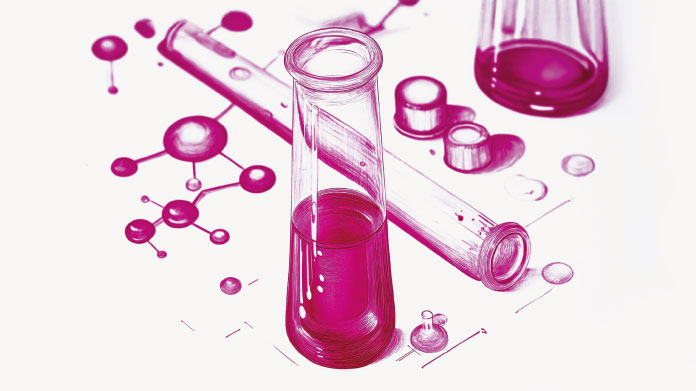Tribulus terrestris: its benefits for your sex life, composition, dosage
Used for thousands of years, Tribulus terrestris is very popular for helping to keep things fun in the bedroom. Spotlight on this unique plant.

Tribulus terrestris, also known as Maltese Cross
Tribulus terrestris is a rampant plant native to the world’s tropical regions but which thrives in dry soil and maritime conditions. It grows to a maximum height of 50cm and produces subtle yellow flowers, often obscured by the long leaves that grow all along its stems (1).
But it is above all the plant’s fruit which has been used for thousands of years in Ayurveda (2) and to which it owes its reputation as an ‘all-purpose plant’. Capable of puncturing a bicycle tyre, the fruit’s distinctive sharp and very tough thorns are in the shape of a Maltese Cross, hence the plant’s alternative name (3).
Composition and active ingredients of tribulus terrestris
Tribulus terrestris has for some years been attracting the interest of medical researchers and phytotherapists, giving rise to numerous studies aimed at pinpointing its active ingredients. Scientists have thus succeeded in identifying some large groups of beneficial molecules in the plant:
- steroidal saponins, including tribulosin and protodioscin, chemically similar to DHEA (4) ;
- beta-sitosterol-D-glucoside, a promising phytosterol (5) ;
- oligosaccharides ;
- and numerous other compounds.
However, these studies have also revealed a wide variation in the contentTribulus terrestris is grown.
The plant’s benefits for sexual function and health
The benefits of Maltese Cross are primarily due to its steroidal saponins particularly tribulosin and protodioscin. These compounds enable Tribulus terrestris to support the health of the:
- sex organs as well as normal hormone activity (6-8) ;
- skin and mouth (9) ;
- immune system (10) ;
- cardiovascular system (11) ;
- nervous system(12).
Tribulus terrestris is thus widely consumed in the form of dietary supplements designed to support sexual function in both men and women. In addition to this sexuality aspect, tribulus is also popular with many sportspeople who use the plant’s benefits to support their performance.
Dosage: how much Tribulus terrestris should you take?
The traditional dosage for Tribulus terrestris in Ayurveda and in all the traditional systems of medicine in which it is used is largely empirical and varies from one region to another (13). This is probably because of the wide disparity in the plant’s steroidal saponin content.
With high-quality extracts standardised to 40% saponins, as is the case for our supplement Tribulus terrestris, the recommended dose is 1500mg a day, but you can, of course, ask your therapist for advice on the right dose for your particular needs. We should point out that at the doses generally recommended, Tribulus terrestris has not resulted in any adverse side-effects (14).
Some natural substances to take alongside Tribulus terrestris
Tribulus terrestris can be combined with various natural compounds:
- the plant Avena sativa, which supports urogenital health and helps to revitalise the body;
- catuaba bark, a small, vigorous tree from northern Brazil;
- epimedium, a plant often used in traditional Chinese medicine;
- and extract of Muira puama, a tree with a grey-coloured trunk sometimes referred to as ‘Potency Wood’
These various ingredients can be found, amongst others, in synergistic formulations (such as the well-known supplement for men Prosexual Formula Man).
References
- YANALA, Suresh Reddy, SATHYANARAYANA, D., et KANNAN, K. A Recent Phytochemical Review-Fruits of Tribulus terrestris Linn. Journal of Pharmaceutical Sciences and Research, 2016, vol. 8, no 3, p. 132.
- WILLIAMSON, Elizabeth M. Major herbs of Ayurveda. Churchill Livingstone, 2002.
- REGE, Nirmala N., THATTE, Urmila M., et DAHANUKAR, Sharadini A. Adaptogenic properties of six rasayana herbs used in Ayurvedic medicine. Phytotherapy Research: An International Journal Devoted to Pharmacological and Toxicological Evaluation of Natural Product Derivatives, 1999, vol. 13, no 4, p. 275-291.
- YAN, Wang, OHTANI, Kazuhiro, KASAI, Ryoji, et al. Steroidal saponins from fruits of Tribulus terrestris. Phytochemistry, 1996, vol. 42, no 5, p. 1417-1422.
- DEEPAK, M., DIPANKAR, G., PRASHANTH, D., et al. Tribulosin and β-sitosterol-D-glucoside, the anthelmintic principles of Tribulus terrestris. Phytomedicine, 2002, vol. 9, no 8, p. 753-756.
- NASUTION, A. W. Effect of Tribulus terrestris treatment on impotence and libido disorders. Andalas University, School of Medicine, 1993.
- GAUTHAMAN, K., ADAIKAN, P. G., et PRASAD, R. N. V. Aphrodisiac properties of Tribulus Terrestris extract (Protodioscin) in normal and castrated rats. Life sciences, 2002, vol. 71, no 12, p. 1385-1396.
- SANTOS JR, C. A., REIS, L. O., DESTRO-SAADE, R., et al. Tribulus terrestris versus placebo in the treatment of erectile dysfunction: a prospective, randomized, double-blind study. Actas Urológicas Españolas (English Edition), 2014, vol. 38, no 4, p. 244-248.
- KANG, Seok Yong, JUNG, Hyo Won, NAM, Joo Hyun, et al. Effects of the fruit extract of Tribulus terrestris on skin inflammation in mice with oxazolone-induced atopic dermatitis through regulation of calcium channels, Orai-1 and TRPV3, and mast cell activation. Evidence-Based Complementary and Alternative Medicine, 2017, vol. 2017.
- YAZDI, Faramarz Fekri, GHALAMKARI, Gholamreza, TOGHYANI, Majid, et al. Efficiency of Tribulus terrestris L. as an antibiotic growth promoter substitute on performance and immune responses in broiler chicks. Asian Pacific Journal of Tropical Disease, 2014, vol. 4, p. S1014-S1018.
- WANG, B., MA, L., et LIU, T. 406 cases of angina pectoris in coronary heart disease treated with saponin of Tribulus terrestris. Zhong xi yi jie he za zhi= Chinese Journal of Modern Developments in Traditional Medicine, 1990, vol. 10, no 2, p. 85-7, 68.
- Gautam M, Ramanathan M. Saponins of Tribulus terrestris attenuated neuropathic pain through central and peripheral mechanism. Inflammopharmacology. 2019 Aug;27(4):761-772. doi: 10.1007/s10787-018-0502-0. Epub 2018 Jun 25. PMID: 29938333.
- AL-ALI, Muneer, WAHBI, Salman, TWAIJ, Husni, et al. Tribulus terrestris: preliminary study of its diuretic and contractile effects and comparison with Zea mays. Journal of Ethnopharmacology, 2003, vol. 85, no 2-3, p. 257-260.
- ZOVKO KONCIC, Marijana et TOMCZYK, Michal. New insights into dietary supplements used in sport: active substances, pharmacological and side effects. Current drug targets, 2013, vol. 14, no 9, p. 1079-1092.
Keywords
13 Hours
Prompt delivry !!👍
Prompt delivry !!👍
SWEET Christine
1 Days
Good delivery and flawless quality
AS far as delivery and the visual quality are concerned, Supersmart is excellent. I will not comment on the efficacy of the products themselves, since that is only possible over a longer period and in a large customer base compared to people who do not consume a particular product.
Roger De Backer
2 Days
Perfect services
Perfect services, perfect support, great articles about products
Michaela Alali Beitlová
2 Days
Great experience and effective supplements
I’ve purchased many types of supplements from this company over the course of years to treat a few issues, and I’m satisfied with their quality. After using them consistently for a period of time, I can say they met my expectations and I could feel real health benefits that built up over time. Deliveries are always quick. I recommend this company to anyone looking for high-quality supplements.
Giordano
2 Days
Es hat alles gestimmt
Es hat alles gestimmt. Top
marina thieme
6 Days
Great product
Great product, but still evaluating its effectiveness. Highly recommended. Super efficient delivery.
Chalise
10 Days
Quality products
Quality products , efficient and effective customer service. You can’t ask more
CLaudia
16 Days
Good quality product and customer service.
So far, I'm liking this product, and the customer service was very good.
ELZL
22 Days
The products I use are excel·lent
The products I use are excel·lent
ROSAS Josep Maria
30 Days
Delivery is prompt and I never saw a…
Delivery is prompt and I never saw a quality problem with the manufacturing. It is not possible to assess efficacy on a personal basis, since too many factors come into play. Efficacy can only be assessed statistically with a sufficient number of cases.
Roger De Backer
31 Days
I collaborates with the Supersmart…
I collaborates with the Supersmart more than 10 years. Every thing is going good. Quality of the things is good. Delivery comes in time. Five stars definitely !!!
Oleksiy
31 Days
All good
Simple, frictionless site, easy ordering, good delivery updates and execution.
Chris Robbins
33 Days
I feel better
I feel better
Peter Ammann
34 Days
Prompt delivery
Prompt delivery
JAKUB Radisch
35 Days
My new go-to for top quality supplements!
I am buying more and more of my supplements from this superb, high quality company. Cannot recommend it enough. Plus, excellent customer service with a quick, helpful team and speedy deliveries. Highly recommend Supersmart!
Cecilie H.
of experience
your money back
##montant## purchase



